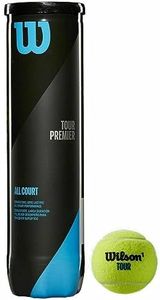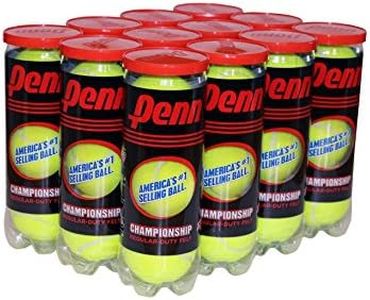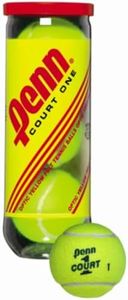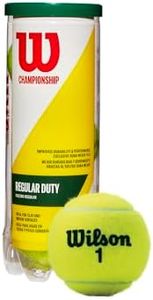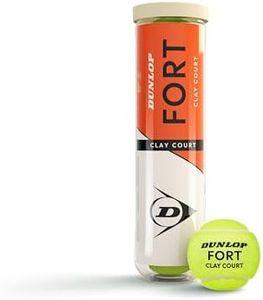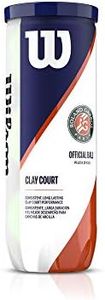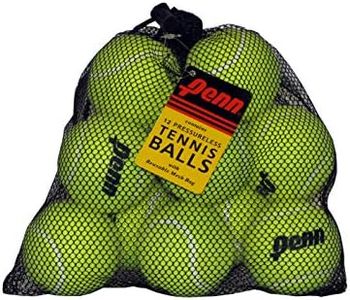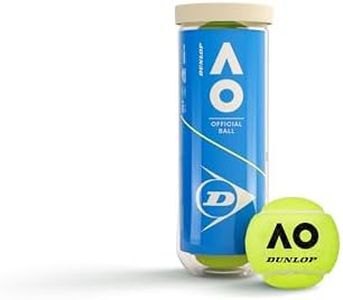We Use CookiesWe use cookies to enhance the security, performance,
functionality and for analytical and promotional activities. By continuing to browse this site you
are agreeing to our privacy policy
10 Best Tennis Balls For Clay Courts
From leading brands and best sellers available on the web.Buying Guide for the Best Tennis Balls For Clay Courts
When choosing tennis balls for clay courts, it's important to know that not all tennis balls are the same. Clay courts have unique characteristics: they're softer than other types of courts and can quickly get dusty or dirty. The wrong type of tennis ball can pick up too much clay, become heavy, or not bounce well, making your playing experience less enjoyable. By understanding key specs, you'll be able to choose the ball that performs best under these conditions and helps you enjoy your game.Felt TypeThe felt is the fuzzy outer layer of the tennis ball, and it's very important for playability and durability. For clay courts, balls with a woven, tightly-knit felt are ideal. This is because tightly-woven felt picks up less clay and doesn't get heavy or slippery easily, keeping the ball's bounce and speed consistent. When looking at tennis balls, look for those specifically labeled as designed for clay—it usually means the felt has been chosen for this purpose. If you're a casual player, you might not notice a huge difference, but if you play often on clay, the right felt can really improve your game.
Pressurized vs. PressurelessTennis balls can be either pressurized (filled with air) or pressureless (solid core). Pressurized balls feel livelier and are bouncier at first, which many players enjoy. However, on clay courts, they can lose their bounce more quickly, especially as they collect dust. Pressureless balls last longer because their bounce comes from the rubber shell rather than air, but they can feel heavier and slower. If you want a consistent feel and don't mind a ball that's a bit slower, pressureless might be for you. But if you prefer a high bounce and don't mind replacing balls more often, choose pressurized.
Bounce HeightBounce height describes how high the ball springs back up when it hits the court. On clay, balls tend to bounce a little lower and slower compared to hard courts, so a ball that maintains a reliable bounce is important. Test balls if you can: drop them from shoulder height and watch if they bounce evenly and lively. If you like faster, high-bouncing games, opt for balls known for retaining bounce. If you prefer longer rallies and control, a ball with moderate bounce may feel best.
DurabilityDurability refers to how long the ball keeps its shape, bounce, and felt before wearing out. Clay can wear the ball felt quickly, so durable balls designed for clay are a wise choice. If you play often or don't want to change balls mid-match, look for those advertised as heavy-duty or made for clay. If you don't play often or are okay with the occasional replacement, any well-constructed tennis ball should suffice.
ITF ApprovalSome tennis balls are approved by the International Tennis Federation (ITF), meaning they've met global standards for quality and consistency. This isn't a must for everyone, but if you're playing in competitions or want to ensure consistent, reliable play, choosing ITF-approved balls can be reassuring. For recreational players, it's nice but not essential—focus more on the above factors.

